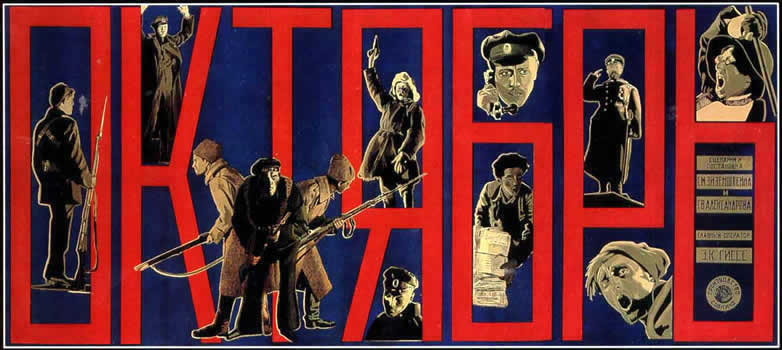At the Royal Academy of Arts, London, the exhibition Revolution : Russian Art : 1917-1932 runs until 17th April. "This far-ranging exhibition will – for the first time – survey the entire artistic landscape of post-Revolutionary Russia, encompassing Kandinsky’s boldly innovative compositions, the dynamic abstractions of Malevich and the Suprematists, and the emergence of Socialist Realism, which would come to define Communist art as the only style accepted by the regime."
"The Revolution That Changed Everything" - watch the RA Video on the website -it's short but good. There will be discussions on the role of art under state control and weekend course on the effects of revolution on Russian art. The overthrow of the Tsar was just a beginning. Several revolutions were taking place all at once - political, social and artistic. For a moment, Russia was the vanguard of progressive innovation. Futurist ideas inspired new approaches to visual art, music, film and literature. Lots of interesting issues arising. What is "the Art of The People" ? What is propaganda and what isn't ? Does it depend whose side you're on ? Most provocatively, who are "The People" ?
A good time to revisit Sergei Eisenstein's October : Ten Days that Shook the World (1927) reflecting on ten years of revolution. Dmitri Shostakovich wrote the soundtrack for the re-issue of the film on the 50th anniversary of the October Revolution. The narrative is straightforward, told with broad brush directness. But whatb Eisenstein does with the story is turn it into a work of art. A statue of the Tsar is seen outlined against the sky. It's torn down by diagonal ropes. A crowd cheers, arms raised heavenwards. Scythes are seen, en masse. Close ups of soldiers faces, grinning, then suddenly, we're in an ornate palace, with elaborate mosaic floor tiles. Cut to angular shots of heavy machinery, to images of starving children dwarfed by huge columns of stone, to shots of a crowd waiting, at night for a train. "Ulyanov ! It's him !"
Diagonals fill the screen, shaking up flat, "natural" order. Flags and banners wave, crowds march, individuals lost in orchestrated movement. Gunshots are fired. Suddenly the tightly packed march disintegrates, figures running wildly across a huge city square. Cannons, horses fall to the ground, crippled. The gates of a huge bridge open, magnificent abstract lines : but a horse is impaled in the machinery.the modern age versus the past, in one horrific image. In a palace, the Provisional government gathers. Officials walk up and down grand staircases, pre dating the works of M C Escher. Hurried footsteps, leading nowhere. When the words "For God and country" appear in subtitles, we see, not Orthodox depictions of God but alien Gods - primitive sculptures, Buddhas, Gods so primitive and atavistic that they can't be identified. Tanks arrive to crush the revolution. What we see are rolling tracks, machines of destruction terrifying because they are impersonal. Close ups of guns and individual bullets : the proletariat will fight back.
The bridge across the Neva is raised again, but a ship- with four, impressive funnels. We see sailors, and cadets marching, as the massive gates of an imperial palace are pulled shut. A half naked woman cavorts on the billiard table of the Tsar. What's going on ? Through a collage of images, Eisenstein recreates the tension and uncertainity that people must have felt in the upheaval. This is cinematic technique as art, not unlike the fractured visuals of Cubist painting.
The Bolsheviks mobilize. Eisenstein shows images of hands operating telegraph machines, of armed men rushing up and down staircases, men with bayonets. swathed in smoke. A ravaged looking woman looks up at a marble sculpture : without explicit dialogue, is Eisenstein suggesting the idea of redemption through the high ideals that art can symbolize ? Or something completely different ? Because the nature of art is not necessarily specific, but the opening up of possibilities. Foir all we know, that's why Stalinists needed conservative "realism". where no-one needs to think.
The army declares for Bolshevism: a forest of bayonets. Wheels are turning, the machine surging ahead. Machine gun clips fire, and cannons, in such rapid sequence that the images hardly have time to register. Troops swarm into the palace, ascending the marble staircases : we can "hear" the sound of their boots in short, sharp images. The Revolution is won ! we see the faces of clocks mark the moment, in Petrograd, in Moscow, around the world.

No comments:
Post a Comment